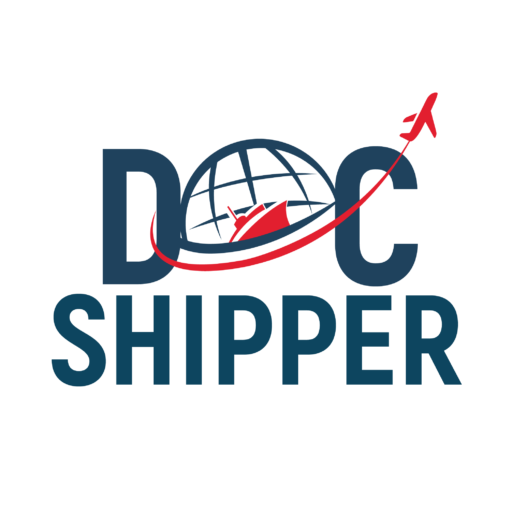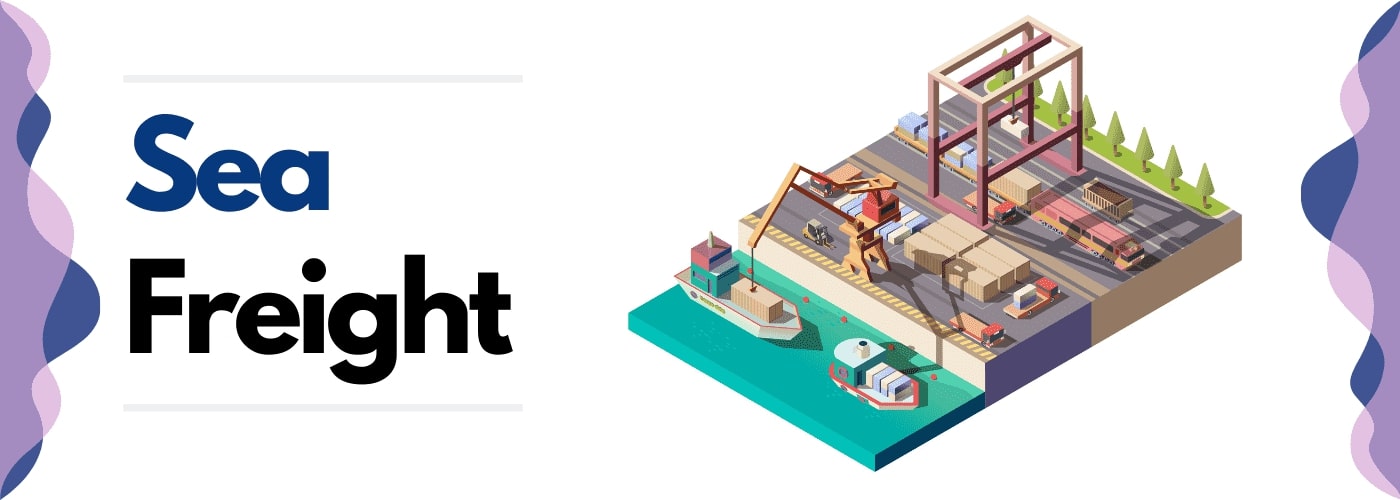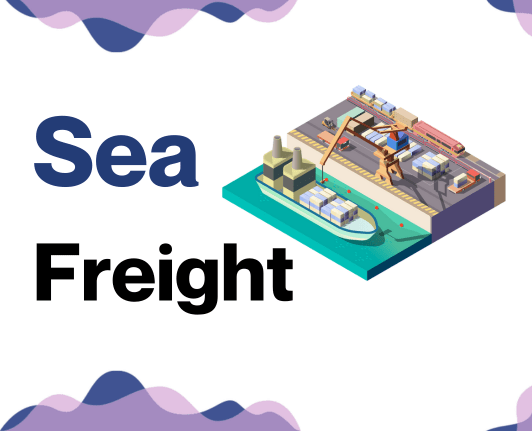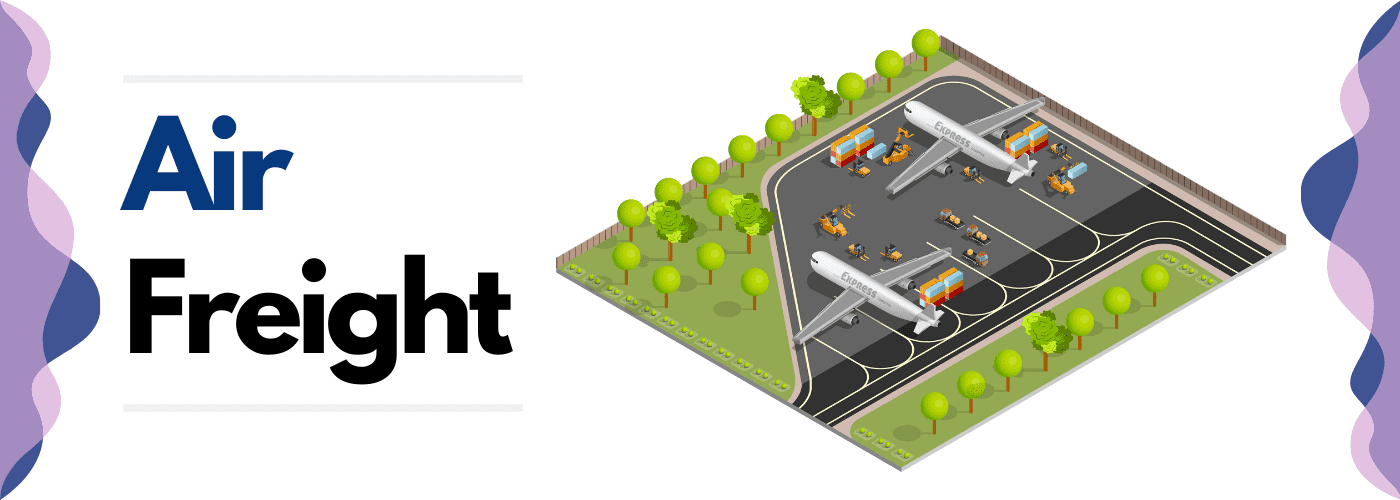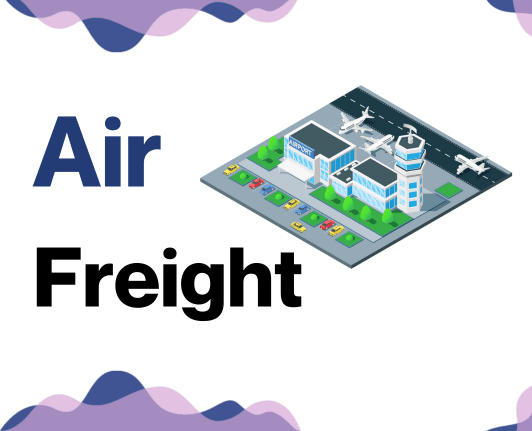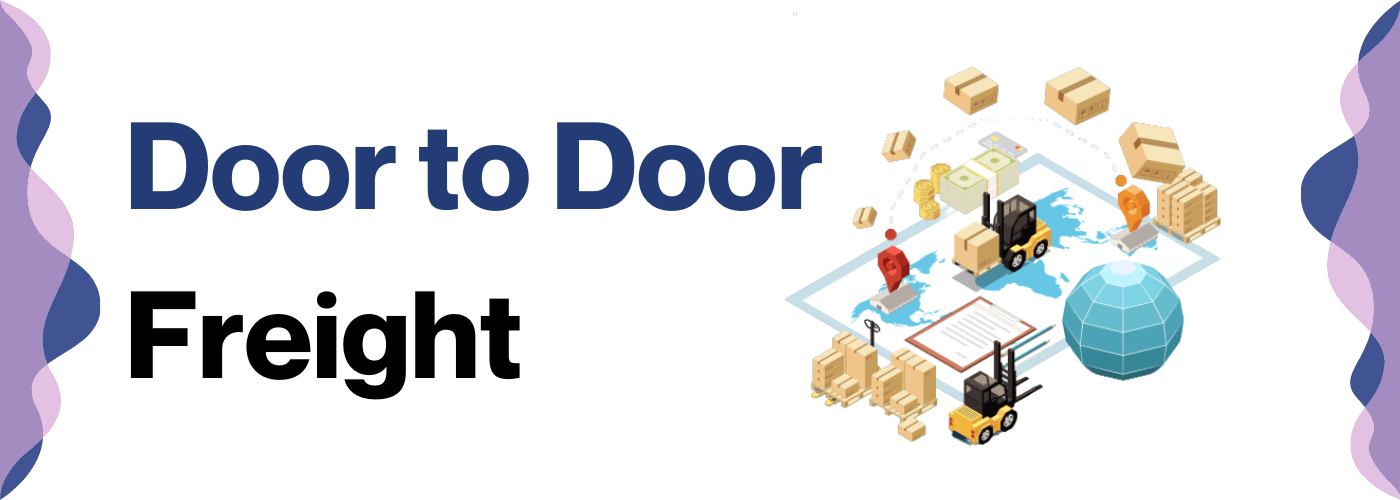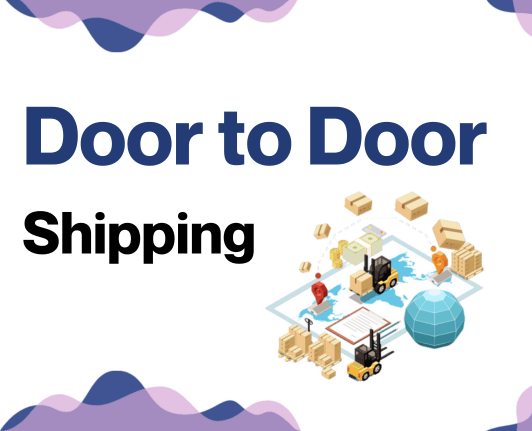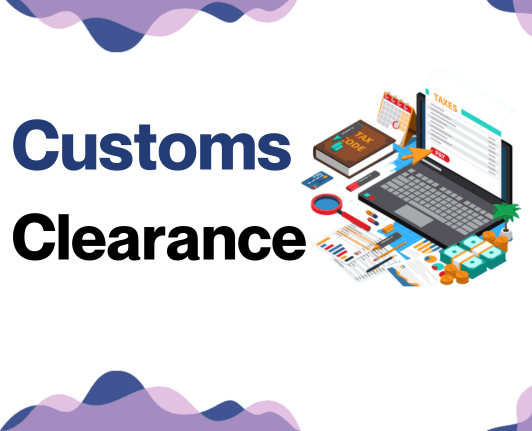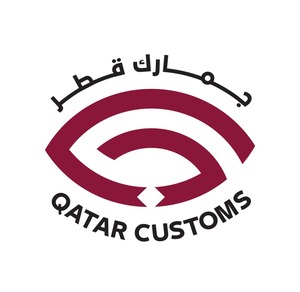Why did the shipping container go to school? Because it wanted to get a little more class than cargo. Bad jokes aside, those in the business know all too well the complexities of shipping from Qatar to Spain, including understanding the myriad of rates, transit times, and customs regulations. This guide is your trusted advisor, designed to address your pain points and questions – from outlining different freight options to explaining the customs clearance process, duties, and taxes that come along with transcontinental shipping.
We aim to provide tailored advice that will resonate specifically with businesses involved in international trade. If the process still feels overwhelming, let DocShipper handle it for you! As an international freight forwarder, we take care of every step of your shipping journey, turning challenges into milestones of success for your business.
Which are the different modes of transportation between Qatar and Spain?
When shipping goods between Qatar and Spain, you face a unique puzzle. Picture it like planning a holiday trip—your method of travel depends on distance, time, and cost. The path is vast, stretching over 5,000 kilometers—like going up and down Mount Everest about 570 times! As there's no direct road or rail connecting these nations, our top picks are air and sea freight. It's like choosing between a jet ski or a hot air balloon—each has its own pros and cons. Remember, the best choice aligns with your cargo's size, urgency, and budget. Let's dig deeper to discover your ideal route.
How can DocShipper help?
Experience seamless shipping from Qatar to Spain with DocShipper's reliable solutions. We tackle all obstacles head-on – from transportation logistics to customs clearance, we've got you covered. Got a question, or need a quote? Touch base with our skilled consultants for your free estimate in under 24 hours.
DocShipper Tip: Sea freight might be the best solution for you if:
- You're dealing with hefty quantities or large-scale goods. Sea freight is your go-to for maximizing space without stretching your budget.
- Your cargo doesn't have an urgent deadline, as sea freight typically has longer transit times compared to air or rail.
- Your shipping routes are between major ports, allowing you to leverage the extensive global network of sea shipping lanes.
Sea freight between Qatar and Spain
On the global trade map, Qatar and Spain share a dynamic exchange, culminating in a bustling oceanic trail. Key industrial regions in these countries are marvelously connected through the ports of Ras Laffan and Barcelona, mirroring a sea-based silk road of commerce. If you're a shipper considering high-volume transportation, picture ocean freight as a mammoth, slow-churning wheel - unhurried, but offering unparalleled cost efficiency.
Switch dimensions and suddenly, you're stepping into quicksand, are you not? The journey from Qatar to Spain is littered with regulatory icebergs and logistical knots that are easy to trip upon. Mistakes are dime a dozen, turning what should be a streamlined process into a herculean task. But worry not! It's like deciphering an encrypted message; with the right set of keys - or best practices and specifications in our case - you can smoothly sail through the sea of uncertainties. Sit back as we share a compass to navigate these azure highways efficiently. Embrace hassle-free shipping from Qatar to Spain, one container at a time.
Main shipping ports in Qatar
Port of Hamad
Location and Volume: Situated in Umm Al-Houl, Qatar, the Port of Hamad is the main gateway for international trade in Qatar, handling a shipping volume of over 2 million TEU annually.
Key Trading Partners and Strategic Importance: The port maintains close ties with key trading partners like China, India, and Oman. It is part of the New Silk Road Belt initiative, enhancing its strategic importance as a pivotal point in the global container network.
Context for Businesses: If your business is aiming to break into the Middle Eastern or Asian markets, the Port of Hamad might be a significant inclusion in your logistics strategy due to its advanced infrastructure, strategic connections, and cost-effective handling facilities.
Ras Laffan Industrial City
Location and Volume: Located in the northern part of Qatar, Ras Laffan Industrial City primarily operates as a petroleum and petrochemical export hub, handling large volumes of liquefied natural gas (LNG) and oil.
Key Trading Partners and Strategic Importance: Ras Laffan's main trading partners are gas-consuming nations like Japan, South Korea, India, and China. Significant for its massive onshore gas processing facilities, this port is a critical part of the global oil and gas supply chain.
Context for Businesses: If you’re in the energy sector, Ras Laffan can facilitate your LNG or oil exports to top energy-consuming nations. Its top-tier capabilities in handling diverse shipment sizes ensure seamless delivery of goods.
Doha Port
Location and Volume: Doha Port, located in the heart of Qatar's capital, focuses on coastal shipping, handling lesser volumes than the other two ports.
Key Trading Partners and Strategic Importance: Doha Port primarily facilitates regional trading activities with gulf countries. While its strategic importance isn't as monumental as the other two ports, Doha Port still contributes substantially to the local economy.
Context for Businesses: For catering to regional shipping requirements within the Gulf region and maintaining a swift movement of domestic goods, Doha port could align well with your shipping strategy.
Main shipping ports in Spain
Port of Barcelona
Location and Volume: Located on the Northeast of Spain's coastline, the Port of Barcelona holds international significance due to its position as the primary port in Catalonia. With an impressive shipping volume of over 3 million TEUs, this port plays a pivotal role in Spain's commerce.
Key Trading Partners and Strategic Importance: As one of the Mediterranean's busiest ports, it maintains strong ties with major global trading partners, including the United States, China, and the Middle East. This port is a crucial gateway for European-Asian trading routes.
Context for Businesses: If you're planning on entering European markets or expanding your business footprint in Asia or the United States, the Port of Barcelona, with its advanced logistics capabilities and excellent hinterland connectivity, might be the cornerstone of your shipping strategy.
Port of Valencia
Location and Volume: Known as the largest port of Spain and the Mediterranean, the Port of Valencia is situated on the east coast of Spain. It commodiously handles over 5.42 million TEUs, making it phenomenally important for international trade.
Key Trading Partners and Strategic Importance: Its extensive network includes major Asian countries, Europe, and the Americas. Owing to its strategic location and notable size, it serves as a significant transshipment hub for goods.
Context for Businesses: Businesses looking to tap into Asian and American markets can hugely benefit from the Port of Valencia's exceptional cargo handling capabilities and vast trading network.
Port of Algeciras
Location and Volume: Located in the south of Spain, the Port of Algeciras stands as a significant port due to its strategic position on the Strait of Gibraltar. With a shipping volume of approximately 4.77 million TEUs, it is a crucial component of Spain's shipping infrastructure.
Key Trading Partners and Strategic Importance: It is the main link between Europe and Africa, and boasts an important standing in trade with important partners like China and the United States.
Context for Businesses: If you're considering a business growth strategy that involves Africa, Europe, or Asia, the Port of Algeciras with its prime location and renowned efficiency, can be instrumental in your shipping plans.
Port of Bilbao
Location and Volume: The Port of Bilbao occupies the northern coast of Spain. Recognized as a multipurpose port, it handled about 500,000 TEUs shipped to various international destinations.
Key Trading Partners and Strategic Importance: Handling diversified cargo types, it maintains crucial ties with trading partners like the United Kingdom, Netherlands, and Russia.
Context for Businesses: If your business operations involve versatile cargo or aim for trade relations with North Europe, the Port of Bilbao's capacity and strategic position may be beneficial to your shipping strategy.
Port of Las Palmas
Location and Volume: The Port of Las Palmas is situated in the Canary Islands, making it an essential port due to its key location in the Atlantic Ocean. It manages a substantial volume of about 1 million TEUs.
Key Trading Partners and Strategic Importance: It shares significant partnerships with African and South American nations, in addition to being a vital refueling point for transatlantic shipments.
Context for Businesses: Businesses eyeing growth in African or South American markets, or those requiring frequent transatlantic shipments, could find the Port of Las Palmas integral to their logistics plans.
Port of Tarragona
Location and Volume: Lying on the northeastern coast of Spain, the Port of Tarragona attends to diversified cargo including liquid bulks and general cargo. It processes hundreds of thousands of TEUs each year, furthering its economic contribution.
Key Trading Partners and Strategic Importance: Main trading partners include several countries within Europe and North Africa, with a particular focus on chemical industry shipments.
Context for Businesses: If your business caters to the chemical industry or targets markets across Europe and North Africa, the Port of Tarragona's specialized handling services and connectivity may suit your expansive strategy.
Should I choose FCL or LCL when shipping between Qatar and Spain?
Deciding between consolidation or full container for your sea freight between Qatar and Spain? Your choice will shape the efficiency, timeline, and cost-effectiveness of your shipping endeavors. Both Full Container Load (FCL) and Less than Container Load (LCL) strategies come with their own unique benefits and considerations. This guide is here to help you understand these nuances and choose the best option tailored to your specific needs, paving the way for a smooth and successful shipping journey.
LCL: Less than Container Load
Definition: LCL, or Less than Container Load, shipping is a mode of transportation in which your cargo shares a container with other shippers' goods, making it cost-effective and flexible for low volume shipments.
When to Use: Embrace LCL shipping when your cargo is less than 15 cubic meters (CBM). That's because the freight cost won't be heavily impacted by the reduced volume, and you'll benefit from container-sharing.
Example: Consider a Spanish wine distributor who wants to transport 10 CBM of wine bottles to a supermarket in Qatar. As the volume is less than 15 CBM, LCL shipping proves to be economic and facilitates timely delivery without having to wait for enough goods to fill a container.
Cost Implications: In LCL freight, you pay only for the space you occupy, which lessens transport costs. However, be prepared for additional fees like warehousing or port charges - common in consolidation/deconsolidation processes. Don't be troubled though; despite these, the overall costs usually remain competitive, especially for low-volume LCL shipments.
FCL: Full Container Load
Definition: FCL (Full Container Load) shipping refers to the exclusive use of a single container - either a 20'ft or 40'ft - by a single shipper.
When to Use: FCL is the more economical and secure option when you have large amounts - more than 13/14/15 CBM (Cubic Meters) - of cargo. Since the fcl container is sealed at the origin and only opened at the destination, the risk of damage or loss is significantly reduced.
Example: Imagine a furniture manufacturer in Qatar who needs to ship 500 dining chairs to Spain. Their volume exceeds the threshold, making FCL ideal. The chairs are loaded into a 40'ft container, sealed in Doha, and then unsealed in the Valencia port, ensuring safe transit and lower costs than if they'd shipped in smaller batches.
Cost Implications: FCL quotes are usually given per container, unlike LCL (Less than Container Load), which is quoted per cubic meter. When cargo volume is high - the rule of thumb being above 15 CBM - the FCL shipping quote ends up being cheaper. Plus, there are no consolidation or deconsolidation costs involved, further bringing down the cost.
Unlock hassle-free shipping
Shipping between Qatar and Spain? At DocShipper, we're driven by the goal of making cargo shipping hassle-free. Our team of ocean freight experts consider weight, volume, and the sensitivity of your goods to determine whether consolidation or a full container is the best choice for you. Don't navigate these waters alone! Get in touch with us for a free estimate. We'll streamline your route to successful shipping.
How long does sea freight take between Qatar and Spain?
Sea freight shipment from Qatar to Spain generally has an average transit time that can vary widely. These times hinge on various factors including the particular ports utilized, the total weight of the shipment, and the nature of the goods to be transported. For fully personalized and accurate transit time estimates, we recommend reaching out to a freight forwarder like DocShipper.
How much does it cost to ship a container between Qatar and Spain?
Decoding the maze of ocean freight rates can feel daunting, but you're in safe waters with us. Shipping costs per cubic meter (CBM) between Qatar and Spain can vary considerably; it's a pendulum swinging due to numerous variables, ranging from your Point of Loading and Destination, carrier demurrage, to the nature of your goods and even the unpredictable rhythm of monthly market changes. It's virtually impossible to stamp an exact price here, but worry not. Our shipping specialists examine every detail scrupulously, tailoring each quote to your unique case, getting you the best rates in the process. You can rely on us; each client is more than a number, they're a partner on a journey across high seas and wide roads.
Special transportation services
Out of Gauge (OOG) Container
Definition: An OOG container is specifically designed for cargo that exceeds standard shipping container dimensions. This form of sea freight shipping allows for cargo that is too tall, wide, or long to fit into a standard container.
Suitable for: Large machinery, construction equipment, industrial materials, or high volume items that can't be dismantled.
Examples: Transformers, turbines, prefabricated homes, or heavy vehicles.
Why it might be the best choice for you: Out of gauge cargo shipping can save you from the hassle of disassembling or designing your goods to fit certain dimensions. It gives your business the freedom to ship large and unwieldy items which standard containers can't accommodate.
Break Bulk
Definition: Break bulk shipping involves goods that are packaged individually, and then loaded onto a cargo ship. It's primarily for shipping goods that are not containerized, either on pallets, in crates, or in drums.
Suitable for: Large items such as timber, metal sheets, reels, or barrels.
Examples: Construction materials, oil drums, or railway tracks.
Why it might be the best choice for you: When dealing with loose cargo load that doesn't fit into containers, or when your consignment is not large enough to justify the use of a full container, break bulk shipping is advisable.
Dry Bulk
Definition: Dry bulk shipping pertains to solid commodities shipped in large, unpackaged amounts. It’s the transportation of dry, loose material, often in bulk carriers.
Suitable for: Raw materials such as grains, coal, iron ore, or sand.
Examples: Fertilizer exporters or raw material segments in large quantities.
Why it might be the best choice for you: If your business deals with the import or export of large quantities of raw materials, dry bulk shipping can be the most cost-effective and convenient method of transportation.
Roll-on/Roll-off (Ro-Ro)
Definition: Ro-Ro shipping vessels are designed to carry wheeled cargo that can be driven or towed on and off the ship. These ro-ro vessels have built-in ramps which allow the cargo to be efficiently rolled on and off the vessel when in port.
Suitable for: Cars, trucks, trailers, trains, or heavy machinery.
Examples: Automotive industry, heavy machinery manufacturers, or construction equipment dealers.
Why it might be the best choice for you: If your business involves the movement of large machinery or vehicles between Qatar and Spain, Ro-Ro offers a specialized solution where traditional containers might not suffice.
Reefer Containers
Definition: Reefer containers are refrigerated shipping containers used to transport temperature-sensitive cargo. They maintain a specific temperature range, ensuring the goods inside are kept fresh or frozen.
Suitable for: Perishable goods such as fruits, vegetables, dairy products, or medicines.
Examples: Food exporters, pharmaceutical companies, or flower growers.
Why it might be the best choice for you: If your business deals in goods that require specific temperatures during transportation, using refrigerated containers will ensure your products reach their destination in optimal condition.
Remember, the type of sea freight shipping you choose between Qatar and Spain should align with your cargo type, volume, and specific requirements. At DocShipper, we specialize in tailoring the shipping process to suit your specific needs. Feel free to contact us for a free shipping quote in less than 24 hours.
DocShipper Tip: Air freight might be the best solution for you if:
- You're up against the clock or have a non-negotiable delivery date. Air freight is your fastest bet for meeting tight timelines.
- Your shipment is on the smaller side, falling below 2 CBM. Air freight is particularly well-suited for compact cargo loads.
- Your goods are destined for locations that aren't well-served by maritime or rail options. Air freight expands your reach by connecting you to a vast array of international airports.
Air freight between Qatar and Spain
Bright lights, big cities: it's air freight on the fast track! When it comes to shipping between Qatar and Spain, nothing beats the speed and reliability of air transport. Suppose you're sending small quantities of high-value goods like electronics, pharmaceuticals, or fashion items. In that case, air freight not only keeps your assets secure, but it gets them to their destination so swiftly, they'll practically have jet lag.
However, haste makes waste if you're not smart about how you ship. Many businesses trip over hidden costs – such as miscalculating their goods' shipping weight, leading to incorrect shipping costs, or ignoring best practices that could save them a pretty penny. Don't join their ranks! Stick with us, and you'll steer clear of these common pitfalls. We'll guide you through the turbulence right into smooth sailing waters.
Air Cargo vs Express Air Freight: How should I ship?
Flying goods from Qatar to Spain and feeling muddled between air cargo and express air freight? Put simply, air cargo is like booking a seat in a commercial airline, while express air freight is hiring your own private jet. Both can pave the path for your business success, but which option is right for your specific needs? Stick around as we break down the nitty-gritty and help you make the best shipping decision.
Should I choose Air Cargo between Qatar and Spain?
Air cargo between Qatar and Spain is a reliable and cost-effective choice, particularly for shipments exceeding 100/150 kg (220/330 lbs). Qatar Airways and Iberia are key players in both countries, offering robust international airlift. However, anticipate longer transit times due to the airlines' fixed schedules. If budget is your priority, this could be your best option due to the attractive cost-benefit ratio for larger shipments. Remember, it's not just about price, but the full package of service, reliability, and consistent transit times.
Should I choose Express Air Freight between Qatar and Spain?
Thinking about speed and efficiency, express air freight should be in your logistics plan for moving cargo between Qatar and Spain. Express shipping is a service focusing solely on freight carried by dedicated cargo planes, without passengers onboard. This is an excellent option if your shipment is under 1 CBM or weighing around 100/150 kg (220/330 lbs). Reliable international express couriers, like FedEx, UPS, or DHL, could be your answer for smooth, quick deliveries. If facilitating fast and safe delivery is crucial for your business, consider express air freight.
Main international airports in Qatar
Hamad International Airport
Cargo Volume: A state-of-the-art hub, Hamad International Airport boasts capacity for handling 2 million tons of cargo in a year.
Key Trading Partners: Key cargo trade partners include major economies like the UK, USA, China, Singapore, and the UAE, making it a strategic shipping point.
Strategic Importance: The airport is a key global aviation hub, placed in the heart of crucial East-West trade routes. Moreover, its position within the Qatari global transit network makes it an optimal triage point for cargo transport.
Notable Features: The international airport features two parallel runways, capable of accommodating the world's largest aircrafts. It also employs advanced and efficient cargo handling technologies, ensuring swift turnaround times.
For Your Business: If you're shipping time-sensitive or large volumes of goods, the freight handling capabilities and strategic location of Hamad International should be a key consideration in your shipping strategy, enabling you to reach a wide range of international markets effectively.
Al Udeid Air Base
Cargo Volume: Although precise cargo volume data is not widely shared owing to its dual military and civilian use, the airbase does possess significant cargo handling capabilities.
Key Trading Partners: Important trade partners are primarily military allies including the USA and NATO countries.
Strategic Importance: Situated southwest of Doha, it's a crucial logistic hub supporting both military and select commercial operations contributing to the stability of global shipping lanes.
Notable Features: The longest runway in the Middle East and extensive storage facilities make this base capable of managing significant cargo volumes.
For Your Business: Should you have specialized or sensitive freight needs, the security, reliability, and extensive facilities at Al Udeid Air Base make it ideal for businesses with bespoke cargo requirements.
Main international airports in Spain
Adolfo Suárez Madrid-Barajas Airport
Cargo Volume: Over 500,000 tonnes per year, Madrid-Barajas Airport ranks as one of the top in Europe for volume of cargo it handles.
Key Trading Partners: Significant trading partners include the United States, China, Germany, UAE and Mexico.
Strategic Importance: As Spain's main airport, it provides a crucial link to Europe and Latin America, strengthening national and international interconnectivity.
Notable Features: This airport features a dedicated cargo terminal, large parking area, and 24-hour operations which promotes seamless cargo movement.
For Your Business: Madrid-Barajas Airport may be an ideal shipping hub if you're trading with Latin America or need swift European connections. Utilise their robust handling capacity to facilitate efficient cargo shipment.
Barcelona–El Prat Josep Tarradellas Airport
Cargo Volume: Handles around 170,000 tonnes of cargo annually.
Key Trading Partners: Main trading partners include UAE, United States, Qatar, China and South Korea.
Strategic Importance: This airport acts as a key connecting point between Spain and Eastern Asia, Middle East, and North America.
Notable Features: The airport features specialized facilities for handling perishable goods, making it an attractive option if your business deals with temperature-sensitive products.
For Your Business: Barcelona-El Prat Josep Tarradellas Airport makes an optimal choice for businesses needing reliable transport options to Asia or the Middle East.
Zaragoza Airport
Cargo Volume: Processes over 170,000 tonnes of cargo each year.
Key Trading Partners: China, Germany, UAE, USA and South Korea are key trading partners.
Strategic Importance: Zaragoza provides an alternative to Barcelona and Madrid, easing congestion and offering another entry point to the European market.
Notable Features: It is recognized for quick turnaround of flights and expedited processes, enabling efficient cargo movement.
For Your Business: If quick processing times and less congestion are crucial for your operations, Zaragoza Airport can be a valuable part of your shipping strategy.
Vitoria Airport
Cargo Volume: Handles about 60,000 tonnes of cargo annnually.
Key Trading Partners: Most prominent trading partners include USA, China, Germany, UAE and South Korea.
Strategic Importance: Its geographic location and transport links make it an attractive gateway to northern Spain and southern France.
Notable Features: Vitoria Airport boasts specialised handling facilities for different types of cargo, from pharmaceuticals to livestock.
For Your Business: If your business frequently ships to or from the north of Spain or southern France, Vitoria Airport's strategic location could provide significant advantages.
Valencia Airport
Cargo Volume: On average, it handles 15,000 tonnes of cargo yearly.
Key Trading Partners: Major trading partners are comprised of Germany, China, USA, UAE and Netherlands.
Strategic Importance: With excellent connections to the Mediterranean region, Valencia is a springboard for businesses expanding into North Africa.
Notable Features: Valencia Airport offers a range of services, including customs, forwarding, and warehousing.
For Your Business: If expanding to North Africa or Mediterranean countries is on your business agenda, Valencia Airport may be an ideal part of your shipping strategy. Their range of additional services can add value to your logistics operations.
How long does air freight take between Qatar and Spain?
On average, air freight shipping between Qatar and Spain might take around 2-6 days. However, it's vital to note that this duration isn't set in stone. Factors like the specific airports involved, the weight of your cargo, and the type of goods you're shipping can significantly affect the transit time. For pinpoint accurate shipping times, please consider consulting DocShipper, an expert in international freight forwarding.
How much does it cost to ship a parcel between Qatar and Spain with air freight?
Air freight charges between Qatar and Spain broadly hover around $2-$10/kg. However, bear in mind that an exact cost cannot be accurately specified due to fluctuating factors like distance from airports, the size and weight of your goods, and their nature. That said, don't fret! Our skilled team closely works with each client, quoting personalized pricing to ensure you receive the best possible rates. Contact us today and receive a free quote within 24 hours to make your shipping experience seamless and economical.
What is the difference between volumetric and gross weight?
Gross weight is the actual weight of your shipment, while volumetric weight reflects the amount of space it occupies. Both are essential in air freight shipping.
To calculate the gross weight in air cargo, you simply weigh your shipment. Let's say we've a shipment of car parts weighing 220 kg. This converts to approx 485 lbs.
The volumetric weight, on the other hand, is calculated using the formula: Length (cm) x Width (cm) x Height (cm) / 5000. If our car parts' box measures 120 x 80 x 80 cm, the equation becomes: 120x80x80/5000 = 155kg. To convert this to lbs, we get approx 342 lbs.
In Express Air Freight services, the divisor is different: 6000 instead of 5000. Using the same dimensions as above, the calculation becomes 120x80x80/6000 = 128.0 kg (approx 282 lbs).
Freight charges tie in directly with these measurements. Service providers will charge you based on the higher of the two weights, either gross or volumetric - making both crucial to manage costs efficiently.
DocShipper tip: Door to Door might be the best solution for you if:
- You prioritize a smooth, hassle-free shipping experience from start to finish. Door-to-door services manage the entire journey, from initial collection to ultimate delivery.
- You appreciate streamlined communication and would rather deal with one person. A dedicated agent is usually assigned to oversee every detail of your door-to-door shipment.
- You want limit the number of touchpoints for your cargo. Door-to-door services reduce the frequency of transitions between various transport methods, thereby lowering the likelihood of damage or loss.
Door to door between Qatar and Spain
Navigating international shipping can be complex, but 'Door to Door' service eases the process. This comprehensive approach manages your freight’s journey from Qatar to Spain, ensuring seamless transport and customs clearance. Its standout advantage? Unmatched convenience! You're freed from logistics bugs and can concentrate on your business growth. Ready to shelve the stress and embrace simplicity? Let's dive in!
Overview – Door to Door
Shipping between Qatar and Spain can be daunting. However, door to door service simplifies the entire process by taking care of each step for you. From sourcing a transport provider to clearing customs, it's a hassle-free, streamlined solution businesses like you commonly prefer. While it may cost a bit more, it greatly reduces complexities, giving you more time to focus on your business. Remember, the prosperity of your business could outweigh the added service cost. Forge ahead with DocShipper's trustworthy door to door service. It's the calm in the midst of your global logistics storm.
Why should I use a Door to Door service between Qatar and Spain?
So you want to ship from Qatar to Spain without breaking a sweat? This is where Door to Door services come into play. Let's unpack (pun intended) five compelling reasons why this service might be your best friend in international logistics.
1. Stress-Free Logistics: From procurement to delivery, Door to Door services manage the whole conundrum of logistics. Say goodbye to coordinating multiple shippers or dealing with last-minute hiccups.
2. Timely Delivery: Urgent shipment? No problem. These services are designed to handle time-critical transport, making sure your goods get from the Middle East to Europe as quickly as Paella is served in Madrid.
3. Specialized Care: Whether it's Qatari luxury items or Spanish ceramics, complex cargo calls for specialized handling. Door to Door services are all about individual attention and discretion, ensuring your goods are treasured as much as you do.
4. Completeness: From necessary paperwork to stubborn customs clearance in both countries, Door to Door services cover it all. All you have to do is book your service; these professionals will crunch the numbers and the bureaucratic letters for you.
5. Convenience: Last but certainly not least, is convenience. Imagine receiving your goods at your desired location without tackling traffic or wrestling with dolly wheels. Isn’t it akin to enjoying a quiet, peaceful siesta?
In a nutshell, Door to Door services between Qatar and Spain are the epitome of convenience. They remove the strains of international freight forwarding, paving the way for a smooth and successful voyage for your goods.
DocShipper – Door to Door specialist between Qatar and Spain
Navigating international shipping from Qatar to Spain? With DocShipper, count on hassle-free door-to-door service. We expertly manage packing, transport, customs, and more across all shipping methods, ensuring a seamless experience. Your dedicated Account Executive is ready to guide you every step of the way. For a swift, obligation-free quote within 24 hours, or to speak with our experienced consultants, reach out to us. Trust us for comprehensive, proficient freight forwarder solutions that put you at ease.
Customs clearance in Spain for goods imported from Qatar
Mastering customs clearance – the legal process of importing goods from one country, Qatar, for instance, to another like Spain – can be a daunting task. It's fraught with complexities like unexpected fees, fluctuating quotas, and intricate licensing details. Neglecting these subtleties may result in your goods stuck in customs limbo or you incurring extra costs. It's essential to grasp customs duties and taxes to successfully navigate this process.
Not to worry, this guide will pry open these concepts and more to ensure a smooth customs journey. And remember, DocShipper can assist with this process regardless of your goods type and place of origin. Provide us with information about your goods, their value, and HS Code, and we'd be delighted to help you estimate your project costs. Don't venture into the world of customs alone; we're here to guide you!
How to calculate duties & taxes when importing from Qatar to Spain?
Delving into the calculation of customs duties can seem like a daunting task. But worry not! It's a straightforward process when you break it down to its essence. At its core, you need to be aware of five key elements: the country of origin, the HS code, the Customs Value, the Applicable Tariff Rate, and any additional taxes or fees that may apply to the products. But where do you start, you might ask? It's simple! Your first step is to identify the country where your goods were initially manufactured or produced. Establishing this correctly ensures efficient progress throughout the rest of these determining factors.
Step 1 - Identify the Country of Origin
Indeed, pinpointing the Country of Origin may seem like an easy checkbox waiting to be marked but let's refresh its true significance. Firstly, it's an anchor point for your entire shipment process. Legally speaking, it ensures compliance with both Qatari and Spanish trade laws. Secondly, it paves the way to getting an accurate Harmonized System (HS) code, the lifeblood of customs and duties.
Thirdly, Spain has a neat set of trade agreements with Qatar, impacting your bottom line directly. From the European Union - Gulf Cooperation Council (EU-GCC) Cooperation Agreement to specific bilateral free trade agreements, your shipment can reap immense benefits.
Fourthly, the Country of Origin helps identify potential import restrictions Spain might place on Qatari goods. It's your early warning system against any surprise roadblocks. Lastly, it proves vital for record keeping. That's one of the golden rules of international shipping: document every step.
The trick here? Establish the origin fast, accurately, and record it. Keep abreast of Spain's trade agreement shifts and updates. Above all, never underestimate the power of correct documentation! It could save you plenty of time, taxes, and avoid unnecessary legal hassles. Remember: your Country of Origin places the first piece in the export puzzle. Line it up right, and everything else falls into place.
Step 2 - Find the HS Code of your product
The Harmonized System (HS) code is a standardized numerical method of classifying traded products. It is used by customs authorities around the world to identify products for the levy of duties and taxes and to gather international trade statistics.
A straightforward way to find the HS code of your product is to inquire from the supplier. They are more likely to be aware of the product they're importing and the related regulations.
However, if this strategy isn't feasible, you can rely on our easy step-by-step process:
1. Start by utilizing an HS lookup tool. One popular tool is the Harmonized Tariff Schedule.
2. In the search bar, simply type in the name of your product.
3. Check the Heading/Subheading column where the HS code of your product is listed.
Please note that accuracy is pivotal while determining the HS code. Any inaccuracies can lead to shipping delays and potential fines due to misclassification of goods.
Here's an infographic showing you how to read the HS Code. Stay informed and ensure smooth transit for your goods!
Step 3 - Calculate the Customs Value
Understanding the customs value for your goods is the foundation for successful import to Spain from Qatar. Quite different from your product's commercial value, customs value, also known as the CIF (Cost, Insurance, and Freight) value, includes three main components - the price of the goods, international shipping cost, and insurance cost. Let's say you're shipping designer shoes valued at $500, with international shipping costing $200, and an insurance expense of $50. The customs value isn't just the $500 tag on the shoes, but $750 - the total of goods, shipping, and insurance. Calculating this properly is paramount to avoid any discrepancies and unexpected costs during the clearance process. Remember, accurate calculations make for smoother transactions.
Step 4 - Figure out the applicable Import Tariff
An import tariff is a tax imposed by countries on imported goods, and it varies based on the type of product and its origin. This tariff generates revenue and protects domestic industries from foreign competition. In Spain, like the rest of the European Union, the tariff system employed is the Common Customs Tariff.
To determine your product's applicable tariff, you can utilize the TARIC System - European Customs. Simply enter the Harmonized System (HS) code of the product identified earlier and select Qatar as the country of origin. From there, you can check the duties and taxes applied.
For instance, assume the HS code for your goods is 1006 30 (semi-milled or wholly milled rice). By entering this into the TARIC system, you might discover the tariff is 6.3%. If your total Cost, Insurance, and Freight (CIF) costs equate to USD 10,000, your import duties would be calculated as follows: 6.3/100 USD 10,000 = USD 630. This helps you prepare for any extra charges upon arrival in Spain to prevent unforeseen expenditure.
Step 5 - Consider other Import Duties and Taxes
Upon successful customs clearance, keep in mind that there might be additional import costs beyond the standard tariff rate. These can vary depending on the origin of your shipment, as well as the nature of your goods. For instance, excise duty could be applied on items such as alcohol or tobacco. Moreover, anti-dumping duties might come into effect for goods deemed to have been sold at an unfairly low price.
Most significantly, recall that Value Added Tax (VAT) is another charge you'll most likely confront. In Spain, the standard VAT rate is generally 21%. So, for a shipment valued at $10000 with a VAT rate of 21%, your VAT would be $2100. Do remember, these are purely illustrative figures; actual rates might be different.
Always verify up-to-date and accurate rates specific to your product and country of origin. Adhering to these processes can mitigate unnecessary costs and delays, streamlining your business operations in the long run.
Step 6 - Calculate the Customs Duties
Step 6 will guide you through the intricacies of calculating customs duties when importing goods to Spain from Qatar. These calculations are important and, when done correctly, can save your business a significant amount.
For example, suppose a shipment doesn't have VAT. The general formula for customs duty is: Customs Duty = Customs Value x Duty Rate. If your goods are worth $10,000 and the duty rate is 10%, you'll owe $1,000.
If VAT gets added, consider it in your total. The formula changes to: Total Duty = Customs Value x Duty Rate + VAT. Let's say you have the same $10,000 shipment, but now with a 20% VAT. The total duty becomes $3,000 ($1,000 duty + $2,000 VAT).
If anti-dumping taxes and Excise Duty are also applicable, remember to include these in your calculation. Perhaps your shipment, still worth $10,000, incurs a 5% anti-dumping tax and a $500 Excise Duty. With a 10% duty rate and 20% VAT, you'll pay $4,000 ($1,000 duty + $2,000 VAT + $500 anti-dumping tax + $500 Excise Duty).
Navigating the customs environment can be complex, it’s crucial to get it right. That’s where DocShipper can help. We handle every step of your customs clearance, ensuring you're not paying more than necessary. Contact us today for a free quote in less than 24 hours. Relax, knowing your freight is in competent hands.
Does DocShipper charge customs fees?
Yes, as a customs broker in Qatar and Spain, DocShippper handles your tedious customs formalities but does not collect governmental customs duties. Our charge is for the facilitation and not the actual duties. Picture it this way: You're buying a ticket for a concert, but we're just the booth providing it; your payment is to the venue. All customs taxes go straight to government coffers, and we provide official documentation to verify it. Essentially, with us, you pay no excess, only what's essential.
Contact Details for Customs Authorities
Qatar Customs
Official name: Qatar General Authority of Customs
Official website: www.customs.gov.qa/
Spain Customs
Official name: Agencia Tributaria (Spanish Tax Agency)
Official website: www.agenciatributaria.es/
Required documents for customs clearance
Shipping goods internationally often feels like untangling a ball of red tape. Uncovering the meaning and importance of key documents such as the Bill of Lading, Packing List, Certificate of Origin, and Documents of Conformity (CE standard) is essential for a painless customs clearance. Crack this code and watch your global business thrive.
Bill of Lading
Navigating the choppy waters of international shipping? The Bill of Lading is your sturdy anchor—especially when you're shipping from Qatar to Spain. It doesn't merely itemize your cargo, it's the official marker that transfers ownership from you to the recipient. Ever dealt with messy paperwork delays? Here's where the electronic, or 'telex', release comes in. It's a game-changer, speeding up processes by permitting paperless clearance - a nifty sign of the times. Shipping air cargo? It's the Air Waybill's (AWB) time to shine. Just remember, whether you're shipping crates of apparel or precious pearls, getting the Bill of Lading or AWB right means winning half the battle in customs clearance. So sail smarter, not harder!
Packing List
Navigating the sea of logistical challenges between Qatar and Spain can be smoother with a well-prepared Packing List. It's the shipper's responsibility to compile this crucial document, detailing each item within the shipment. Think of it as your shipment's biography: from the products' weight and dimensions to the value and HS code, this list helps the customs authority understand exactly what is crossing borders. Accuracy is paramount here.
Let's say you're shipping industrial machinery parts by sea: an incorrect or vague description could lead to unnecessary delays and increased scrutiny. When sending traditional Qatari jewelry by air, an accurate Packing List ensures quick assessment of potential duties, speeding up the clearance process. Remember, a detailed Packing List makes for happy customs and smoothly shipped goods, no matter if it's via Valencia port or Madrid's Barajas Airport. Happy shipping!
Commercial Invoice
If you're shipping goods between Qatar and Spain, acing your Commercial Invoice is non-negotiable. Consider it a passport for your freight—it tells customs what's in your shipment, its value, and origin. But, it's not just about filling boxes; consistency with other shipping documents is invaluable, limiting potential hold-ups. Struggling with a mismarked HS code? We've been there and recommend double-checking against your Bill of Lading to avoid any errors. Pay attention to details, like ensuring product descriptions match across all paperwork. Aligning your documents can seem like deciphering a cryptic puzzle, but get this right and you'll avoid undue delay, keeping your delivery timeline intact. After all, time is money, especially when you're dealing with international shipping.
Certificate of Origin
When shipping goods from Qatar to Spain, your Certificate of Origin (CoO) is your golden ticket. This document tells customs the story of where your goods were made (country of manufacture), which can unlock preferential customs duty rates. Just think of a Qatari furniture manufacturer exporting premium chairs to a Spanish store. Their CoO, stating 'Made in Qatar', could potentially reduce the import duty they pay at the Spanish border. It's the key to smoother, more cost-effective shipping. So, keep your CoO accurate and handy to reap these benefits. Your bottom line will thank you!
Certificate of Conformity (CE standard)
In shipping goods from Qatar to Spain, a Certificate of Conformity (CoC) to CE standards is crucial. Unlike quality assurance, which highlights a product's overall performance, the CE mark certifies specific safety, health, and environmental protection standards are met in the European Economic Area, including Spain. If you're accustomed to US standards like the FCC mark, the CE mark functions similarly but with a broader scope. This mark is your passport to the European market—it testifies your product's compliance to EEA standards. Strategic advice? Scrutinize your product against these standards before shipping to Spain. Doing so can save you from potential hurdles and smooth the customs clearance. Don't overlook the significance of getting the CE mark—it's more than just a mere sticker!
Your EORI number (Economic Operator Registration Identification)
The EORI number is your golden ticket to a smooth shipping process between Qatar and Spain. Whether you're a business or an individual, it's a non-negotiable requirement when exporting from Qatar to EU member states like Spain. Acting as your unique identifier, the EORI tracks your goods, ensuring a seamless transition across European borders. Securing one isn't rocket science; simply apply through your country's customs website, and voila! You can enjoy worry-free shipping, keeping those pesky delays at bay. Don't forget, without an EORI, your shipment risks being held at customs, creating costly and time-consuming hiccups. So, be sure to register before your goods sail off.
Get Started with DocShipper
Feeling overwhelmed with the intricate customs clearance process for shipping goods between Qatar and Spain? Let DocShipper streamline it for you! Our expert team ensures swift and hassle-free customs handling. No hidden costs, no cumbersome paperwork. Ready for stress-free shipping? Request your free quote today and get a response within 24 hours! Navigate international shipping with ease, trust DocShipper.
Prohibited and Restricted items when importing into Spain
Importing goods into Spain isn't always a free-for-all. You might face challenges due to strict rules on certain items. Knowing what's banned and restricted can save you from hefty penalties and shipping setbacks. Let's shorten your learning curve.
Restricted Products
- Live Animals: If you're planning on shipping live animals to Spain, you have to apply for an Animal Health Certificate from the Ministry of Agriculture, Fisheries and Food.
- Arms and Ammunition: To legally ship arms and ammunition, obtain a permit from the Spanish National Police.
- Medicines: A Certificate of Analysis is needed from the Spanish Agency for Medicines and Health Products for shipping medicines.
- Plants and Plant Products: You can ship plants and plant products by getting a Phytosanitary Certificate from the Ministry of Agriculture, Fisheries and Food.
- Alcoholic Beverages: Shipping alcoholic beverages requires a Special Import License from the Tax Agency of Spain.
- Tobacco Products: For shipping tobacco products, you have to apply for an Import License from the Tobacco Market Commission.
- Chemical Regulations: When shipping chemical substances to Spain, a Registration, Evaluation, Authorization and Restriction of Chemicals (REACH) compliance document is required from the Spanish Ministry of Ecological Transition.
Prohibited products
- Narcotics and illegal substances
- Offensive weapons, such as flick knives
- Self-defense sprays, such as pepper spray and mace
- Rough diamonds and unworked precious stones
- Certain animal species and products (endangered): any animals that are listed on CITES (the Convention on International Trade in Endangered Species of Wild Fauna and Flora)
- Counterfeit goods or pirated items
- Cultural goods, unless accompanied by appropriate documentation
- Certain plants and their produce, including trees, some fruits and vegetables
- Transmitting devices that can interfere with public or private communications
- Radar detectors and jammers
- Products containing biocides not authorized in the European Union
- Pornographic material featuring minors.
Are there any trade agreements between Qatar and Spain?
Yes, shipping between Qatar and Spain is made smoother by established bilateral relations. The Qatar-Spain Forum is an ongoing initiative, fostering trade ties for robust economic cooperation. While there's no specific FTA, both countries are WTO members, simplifying trade processes significantly. Furthermore, the Spain-Qatar rail services, a work-in-progress infrastructure project, promises substantial logistic opportunities in the future. Always ensure to stay abreast of bilateral trade dynamics as they can significantly affect your business and shipping strategies.
Qatar - Spain trade and economic relationship
Sharing a robust and flourishing economic relationship, Qatar and Spain have seen their bilateral trade grow manifold over the years. Historically, key milestones include the 2010 establishment of the Qatari-Spanish Joint Committee facilitating investments and boosting their economic partnership. Various sectors like energy, infrastructure, tourism, and cultural exchanges underline their ties.
Spain is a significant exporter of vehicles, machinery, and pharmaceuticals to Qatar, while Qatar provides Spain with crucial resources, primarily natural gas and petroleum. As of 2023, the bilateral trade volume reached an impressive 4 billion euros, with Qatari investments in Spain exceeding 350 million euros. Keep an eye out for further growth, a testament to the dynamic and progressive nature of the Qatar-Spain Economic relationship.
Your Next Step with DocShipper
Shipping across borders can be tricky, especially between Qatar and Spain with complex logistics involved. Confused about the best shipping method, or need help with customs clearance? Let DocShipper unburden you. We coordinate shipment, manage customs, and ensure a seamless delivery. Ready for stress-free shipping? Contact DocShipper now! We're here to make your global trading journey smooth and efficient.
Additional logistics services
Explore beyond shipping and customs with DocShipper. Uncover how we streamline your supply chain, ensure delivery efficiency, and assist with warehousing solutions to make your global trade runs smoothly. You handle business, we'll handle logistics.
Warehousing and storage
Securing dependable warehousing in Qatar and Spain can be a unique puzzle, especially when dealing with temperature-sensitive items. For instance, products like pharmaceutical goods require consistent temperature control. With our robust warehousing solutions, this task becomes less daunting, allowing you to focus more on your core business. Curious? Discover more about how we simplify storage complexities on our dedicated page: Warehousing.
Packaging and repackaging
To ensure your goods endure their journey from Qatar to Spain, packaging is key. Whether it's delicate ceramics or sturdy machinery, a reliable agent's touch is invaluable. For instance, an extra layer of bubble wrap might save a priceless vase. Similarly, repackaging may prevent custom issues, like removing infested wood from a crate. Good packaging equals peace of mind and smooth customs clearance. The right agent makes it all happen. Learn more on our page: Freight packaging.
Cargo insurance
When shipping goods, things can go sideways. Unlike fire insurance which covers asset loss within your premises, cargo insurance has got you covered from warehouse to warehouse. Imagine, a container dropped during transshipment, or goods damaged due to unpredictable weather at sea - stressors you needn't face. By securing cargo insurance, you'll be cushioning your business against these unforeseeable hitches, ensuring smooth sailing all the way to the destination. Learn more on our dedicated page: Cargo Insurance.
Supplier Management (Sourcing)
Overwhelmed by the challenge of finding trusted suppliers in Asia or East Europe? Let DocShipper ease your load. We expertly handle your sourcing and procurement, overcoming language hurdles and guiding you through each step. As in the case of a Spanish company manufacturing furniture parts in Qatar - we nailed it!
Personal effects shipping
Moving cherished possessions from Qatar to Spain, especially the hefty or delicate pieces, could be a nerve-racking task, right? Imagine professionals easing this process with deft handling and tailored solutions. For example, your prized chandelier is wrapped, safely boxed, and securely shipped without a bead out of place. It’s all about giving your personal effects the special care they deserve during transit.
Quality Control
Quality control is pivotal when shipping goods from Qatar to Spain. It ensures that your products are manufactured or customized to meet both countries' regulations. For example, our quality inspections helped a Qatari textile company avert a substantial fine. The firm initially overlooked Spain's stringent textile standards, but our intervention allowed them to modify their merchandise in time, saving both fines and reputation. Therefore, quality control ensures your goods cross borders without hitches.
Product compliance services
Got a shipment that requires lab testing and certification? Our Product Compliance Services are your one-stop solution. Essential for ensuring your goods meet recipient standards, they remove any guesswork. Consider a Spanish olive oil producer exporting to markets with strict purity standards. Our team would oversee a seamless process, from lab testing the oil to acquiring the necessary certificates, assuring your product's smooth sail through customs.
FAQ | Freight Shipping between Qatar and Spain | Rates - Transit times - Duties and Taxes
What is the necessary paperwork during shipping between Qatar and Spain?
Shipping from Qatar to Spain requires careful documentation. For sea freight, a bill of lading is paramount, while air freight requires an air way bill. Don't worry, we at DocShipper will manage these for you. What we need from you is a detailed packing list and the commercial invoice for a smooth process. Sometimes, depending on the nature of your cargo, other documents like Material Safety Data Sheet (MSDS) or certifications might be required. Overall, it's all about the specifics of your shipment and we're here to guide you through it.
Do I need a customs broker while importing in Spain?
Indeed, we highly advise using a customs broker when importing goods into Spain. With various steps to follow and essential documents to provide, it can be quite a meticulous process. This complexity necessitates a deep understanding of customs regulations, something that a customs broker possesses. At DocShipper, we often act as your representative at customs, taking care of all necessary procedures for the vast majority of shipments. We handle the intricacies, allowing you to focus on what you do best. So while it isn't compulsory, employing a customs broker can significantly streamline the process, saving you time and potential complications.
Can air freight be cheaper than sea freight between Qatar and Spain?
We understand that costs are a key consideration for your shipping decisions. While the cost difference between air and sea freight can vary based on factors such as route, weight, and volume, air freight might be a sensible option for you if your cargo is under 1.5 Cubic Meters or weighs less than 300kg (660 lbs). At DocShipper, we are dedicated to providing you with the most competitive and suitable options for your specific shipping needs. Your account executive will closely work with you to explore the best shipping methods in terms of both cost-effectiveness and efficiency.
Do I need to pay insurance while importing my goods to Spain?
As DocShipper, we want you to understand that insurance isn't mandatory for shipping goods, be it locally or internationally. However, we strongly recommend safeguarding your consignment with insurance. Several unforeseen incidents may occur during transit that could lead to damage or loss. Ensuring you have coverage in place helps to protect your investment from potential theft or accident. So, when it comes to your imports to Spain, consider adding insurance to your shipping plan for peace of mind.
What is the cheapest way to ship to Spain from Qatar?
Given the geographical distance and for cheaper costs, sea freight is the most economical way to ship goods from Qatar to Spain. We recommend a Full Container Load (FCL) if you're shipping in high volumes or Less than Container Load (LCL) for smaller shipments. Keep in mind transit time is longer compared to air freight, plan your shipments accordingly.
EXW, FOB, or CIF?
Choosing between EXW, FOB, or CIF largely depends on your relationship with your supplier. Remember, your supplier may not be a logistics professional, so leveraging an expert like us at DocShipper for processes such as international freight and local handling may be wise. In most cases, suppliers sell under EXW (meaning they're responsible until the goods leave their factory door) or FOB (which includes all local charges up to the origin terminal). Regardless of these terms, you can rely on us to deliver comprehensive door-to-door services.
Goods have arrived at my port in Spain, how do I get them delivered to the final destination?
When goods arrive at your destination port in Spain, if they're handled under CIF/CFR incoterms, you'll need to engage a custom broker or freight forwarder to clear your items at the terminal, cover import charges, and manage the final delivery. Alternatively, we at DocShipper offer DAP incoterms services, where we can manage this entire process for you. Please consult with your dedicated account executive to clarify this detail further.
Does your quotation include all cost?
Absolutely, we ensure complete transparency in our quotations. They encompass all costs, barring the duties and taxes at your destination, ensuring you don't experience any unexpected fees. If you'd like an estimate of these duties and taxes, feel free to reach out to your dedicated account executive. We emphasize keeping all costs upfront, so you're never caught off guard.
